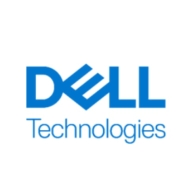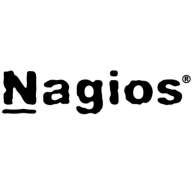

Nagios XI and Dell CloudIQ are competitive in the IT infrastructure management space. Dell CloudIQ appears to have the upper hand with its advanced analytics and proactive insights, despite Nagios XI's competitive pricing and support.
Features: Nagios XI provides flexibility and supports a wide range of plugins for detailed monitoring. It offers an open-source environment with customizable options. Dell CloudIQ's predictive analytics set it apart, integrating seamlessly with Dell EMC infrastructure for proactive system maintenance and efficiency. Its focus on ease of use results in an uncomplicated setup process.
Room for Improvement: Nagios XI could benefit from simplifying the initial setup process, enhancing its user interface, and expanding direct integration options. Dell CloudIQ could improve by expanding its monitoring capabilities beyond Dell products, offering more customization options, and potentially lowering its cost to enhance affordability.
Ease of Deployment and Customer Service: Nagios XI involves a detailed setup process due to its extensive configuration needs, however, it provides robust customer support during deployment. Dell CloudIQ, as a cloud-based solution, offers simpler deployment and is designed for seamless integration with Dell EMC systems, benefiting from strong manufacturer support.
Pricing and ROI: Nagios XI is known for its competitive pricing model, appealing to budget-conscious users while promising reliable monitoring outcomes. Dell CloudIQ, though higher in initial cost, provides significant ROI with intelligent insights and downtime reduction, promoting long-term operational cost savings with proactive management.


CloudIQ is a no cost Software-as-a-Service (SaaS) offering that provides a simple monitoring interface for an unlimited number of Unity systems. CloudIQ accesses data in near real time to enable monitoring and troubleshooting for Unity systems.
Nagios XI provides monitoring of all mission-critical infrastructure components, including applications, services, operating systems, network protocols, systems metrics, and network infrastructure. Third-party add-ons provide tools for monitoring virtually all in-house and external applications, services, and systems.
Nagios XI uses a powerful Core 4 monitoring engine that provides users with the highest levels of server monitoring performance. This high degree of performance enables nearly limitless scalability and monitoring powers.
With Nagios XI, stakeholders can check up on their infrastructure status using the role-based web interface. Sophisticated dashboards enable access to monitoring information and third-party data. Administrators can easily set up permissions so users can only access the infrastructure they are authorized to view.
Nagios XI Benefits and Features
Some of the benefits and top features of using Nagios XI include:
Reviews from Real Users
Nagios XI stands out among its competitors for a number of reasons. Several major ones are its integration options and monitoring abilities, as well as its alerting features.
David P., a senior DevOps engineer at EML Payments Ltd, writes, “We use Nagios as a network discovery tool. We use Nagios to maintain our uptime statistics and to monitor our services. It has allowed us to be much more sophisticated in our monitoring and alerting.”
An IT-OSS manager at a comms service provider notes, “Nagios XI has a custom API feature, and we can expose custom APIs for our integration. This is a great feature.”
We monitor all IT Infrastructure Monitoring reviews to prevent fraudulent reviews and keep review quality high. We do not post reviews by company employees or direct competitors. We validate each review for authenticity via cross-reference with LinkedIn, and personal follow-up with the reviewer when necessary.